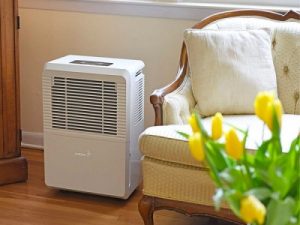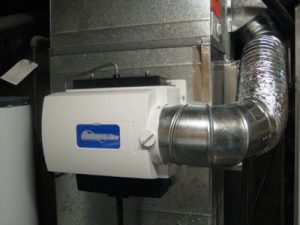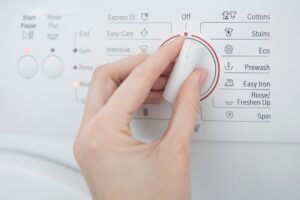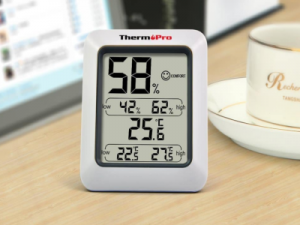
Statistics revealed that 1 out of 13 people suffer from asthma. It means that around 26 million Americans suffer from this condition. These numbers can be quite worrying as more kids are affected by asthma. But, did you know that cold weather can make this disease more severe?
Dry and cold air can be a serious disaster for asthma suffers. Increased cases of upper respiratory and sinus infections are also contributing risk factors. These elements can either worsen or trigger the severity of asthma attacks.
Asthma is a condition affecting several parts of the breathing system. This is why it can be quite dangerous to experience unexpected flare-up. The constriction of breathing muscles combined with inflamed airways and thickened phlegm can prevent a person from breathing. Thus, in cases of extremely severe asthma attacks, a person can literally lose the capacity to breathe.
What are the main triggers of asthma attacks? There is no 100% sure cause of the widespread condition primarily because asthma triggers vary from one person to another.
Asthma Common Triggers
1. Allergies
It seems that around 80% of people with asthma also suffer from allergies. The allergies are quite diverse and these can be to mold, pollens, trees, grass, dust mites, weed, cockroach particles, animal dander, and so on.
Health specialists essentially recommend people with allergies to identify the factors that trigger their allergic reaction. Here, it can help if you invest in a humidifier made especially for allergies.
2. Sinusitis and Other Forms of Upper Respiratory Infections
Just as how asthma causes inflammation of airway lining, sinusitis is the inflammation in mucous membranes lining the sinuses. As the result of the inflammation, the mucous membranes secrete more mucus. This makes it necessary to treat sinusitis or avoid it altogether so it doesn’t worsen into asthma.
3. Exposure to Different Irritants
There are several irritants that can trigger or worsen asthma. These irritants can include tobacco smoke, smoke from appliances that burn wood, perfumes, strong odors from cleaning agents, and many others.
4. Cold Air and Sudden Humidity and Temperature Changes
People who suffer from asthma can notice changes in their symptoms with the season or weather.
What is with cold weather that worsens the severity of asthma? Once cold air enters a person’s airways, it makes them go into spasms that can trigger common symptoms of asthma such as shortness of breath, tightness in chest, coughing, and wheezing. Once the temperature gets too low, the cases of flu and other forms of sinus infections become even more widespread, causing further discomfort.
This doesn’t mean that high levels of humidity can benefit asthma sufferers. In fact, different dangers are associated with higher than normal humidity levels. Some people may notice their symptoms getting worse if the weather gets too damp. This makes it important to be extra careful.
How a Humidifier Helps with Asthma
More than anything else, it is imperative to keep an eye on the levels of humidity inside your home. Only after you do this that you can determine if you should buy a humidifier or not. Your area of residence also plays an important role here.
For instance, in cases where your home’s humidity level is less than 30%, a likely scenario during cold weather, you may consider investing in a humidifier.
In addition, you also have to make sure that you monitor your home’s humidity level all the time. More specifically, once the level of humidity goes beyond 50%, make sure you shut off the unit. This is because humidity levels higher than 50% can likely encourage the development and spread of mold, mites, and bacteria. As mentioned earlier, these are some of the common trigger of asthma so it wouldn’t hurt to be very careful in addressing these issues.
Low levels of humidity can be associated with dry skin, irritated nasal passages, itchy eyes, and dry throat. On the other hand, high levels of humidity will make your home feel stuffy and in some instances, cause condensation on walls and the rest of the surfaces around the house. After some time, this can lead to growth of detrimental mold, dust mites, and bacteria.
These dangerous allergens can be quite harmful, particularly for people with asthma. It is the reason why you should maintain a well balanced humidity level at somewhere between 30% and 50%.
Provided that you consider these things, a humidifier can provide relief. This is because it helps ease the discomfort of dry throat, dry lips, dry skin, and dry nose. A humidifier also helps make it more comfortable to breath.
The reason why more and more people use humidifiers is because this appliance helps loosen the mucus in the throat and chest. It is also worthy to mention that a humidifier can release moist air. It is very efficient as this can keep your airways free in a very natural way. Although most asthmatics rely on nasal sprays and over the counter medications that can help open the airways, these are usually associated with several side effects.
How to Measure Humidity Level
How do you measure your home’s humidity level to ensure that it doesn’t get too high or too low? The hygrometer is the most reliable device you can use for this.
The device can measure the humidity in your home so that you will know when you need to turn off the humidifier.
The Bottom Line
As you can see, a humidifier can make a big difference in the lives of asthma sufferers. This appliance can alleviate the severity of your asthma symptoms, including nasal and throat dryness, breathing discomfort, itchiness, and others. Aside from this, make sure you also know the triggers to your asthma attacks as this will let you reduce their frequency and prevent sudden unexpected flare-ups.

































